My burn-up chart for the current sprint has a "completed" line that nicely intersects the sprint guideline, so I can take a moment this Monday morning to eat lunch and read some news stories:
And closer to home—like, less than a kilometer away—the City of Chicago has made some recommendations to improve a stretch of Clark Street that could be a model for other streets in the city.
Eli Dourado takes a deep dive into the engineering and economics that could raise a fleet of 25,000 autonomous cargo airships, each two Chicago city blocks long floating just 1,500 meters over your head while carrying 500 tons of cargo:
Let’s say airships captured half of the 13 trillion ton-km currently served by container ships at a price of 10¢ per ton-km. That would equal $650 billion in annual revenue for cargo airships, notably much bigger than the $106 billion Boeing reports for the entire global air freight market. If one company owned the cargo airship market, taking only half of only the container market, it would be the biggest company in the world by revenue.
How many airships would we need to fill that demand? A lot. If each airship can carry 500 tons, cruises at 90 km/h, and is utilized two-thirds of the time, that adds up to around 260 million ton-km per year per airship. To produce 6.5 trillion ton-km per year would require 25,000 such airships. This is about the number of airliners in the world today.
Cargo airships would probably be among the easiest vehicles to make unmanned. The sky is big and empty, but it’s especially empty over the ocean at the lowish altitudes, below airliners’ Class A airspace, where airships would fly. Even when you get over land and near landing facilities, airships are slow moving relative to other aircraft, so there is time for a remote pilot to take over if any off-nominal condition occurs.
In my experience, once you start thinking about giant cargo airships, it’s hard to stop.
Try to actually picture it in your mind—an object the size of the Empire State Building floating across the sky a thousand feet above your head. They would be so common that you would see them daily, driving commerce and extending the gains from trade further than ever before. They would, of course, obey every law of physics, but to our minds trained on today’s mundane reality, they would appear to defy gravity.
For me, they would carry symbolic value. Every time I saw one, I’d remember that great things are possible.
I think the economics make sense, especially his math on using hydrogen instead of helium as the lifting gas. I hope I live long enough to see these things above Chicago.
I finished a couple of big stories for my day job today that let us throw away a whole bunch of code from early 2020. I also spent 40 minutes writing a bug report for the third time because not everyone diligently reads attachments. (That sentence went through several drafts, just so you know.)
While waiting for several builds to complete today, I happened upon these stories:
Finally, a school district food service director ordered more than 11,000 cases of chicken wings worth $1.5m over the last three years, which the State's Attorney says never got to the kids.
And now, since the temperature has risen from this morning's -17°C all the way up to...uh...-11.4°C, I will now walk the adorable creature who keeps nosing me in the arm as I type this.
The last Boeing 747 rolled off the assembly line Tuesday. Sam Howe Verhovek gives it a eulogy:
Remarkably, barely three years after a handshake agreement, the Boeing 747 rolled out of a giant factory a bit north of Seattle. It quickly made global air travel more affordable than it had ever been, fulfilling Trippe’s vision of a world where plumbers and schoolteachers, not just the well-heeled, could think about taking their families to London or Rio de Janeiro or Tokyo.
This week, 53 years after the first Pan Am passenger flights between New York and London, the 1,574th — and last — Boeing 747 had its ceremonial send-off and took to the skies. This ultimate example of the famous airliner has a depiction on its tail of Atlas holding the world atop his shoulders, as the logo of the cargo and charter carrier Atlas Air Worldwide. How appropriate, for the 747 created a worldwide web long before there was a World Wide Web.
The “Queen of the Skies” is passing out of fashion because nimbler, more energy efficient jetliners with two engines — rather than the 747’s four — have come along to do a better job of getting people from point to point internationally.
Aviation engineers truly accomplished the phenomenal more than half a century ago when they met the challenge concocted by those two guys fishing in Alaska. Today’s airplane designers should use the story of the Boeing 747’s success as inspiration for the great task they now face of building an airliner that’s not only fast and affordable and safe, but green as well.
I last flew on a 747 on 7 December 2015, coming home from London, and last rode in the upper deck on 7 November 2014—on the same flight, Speedbird 295. British Airways gave up its last 747s during the pandemic, and very few other airlines still use it for passenger flights. So unless I hop a Cathay Pacific flight to Singapore soon, I'll probably never ride in one again.
Welcome to stop #79 on the Brews and Choos project.
Brewery: Bungalow by Middle Brow., 2840 W. Armitage Ave., Chicago
Train line: CTA Blue Line, California
Time from Chicago: 14 minutes
Distance from station: 600 m
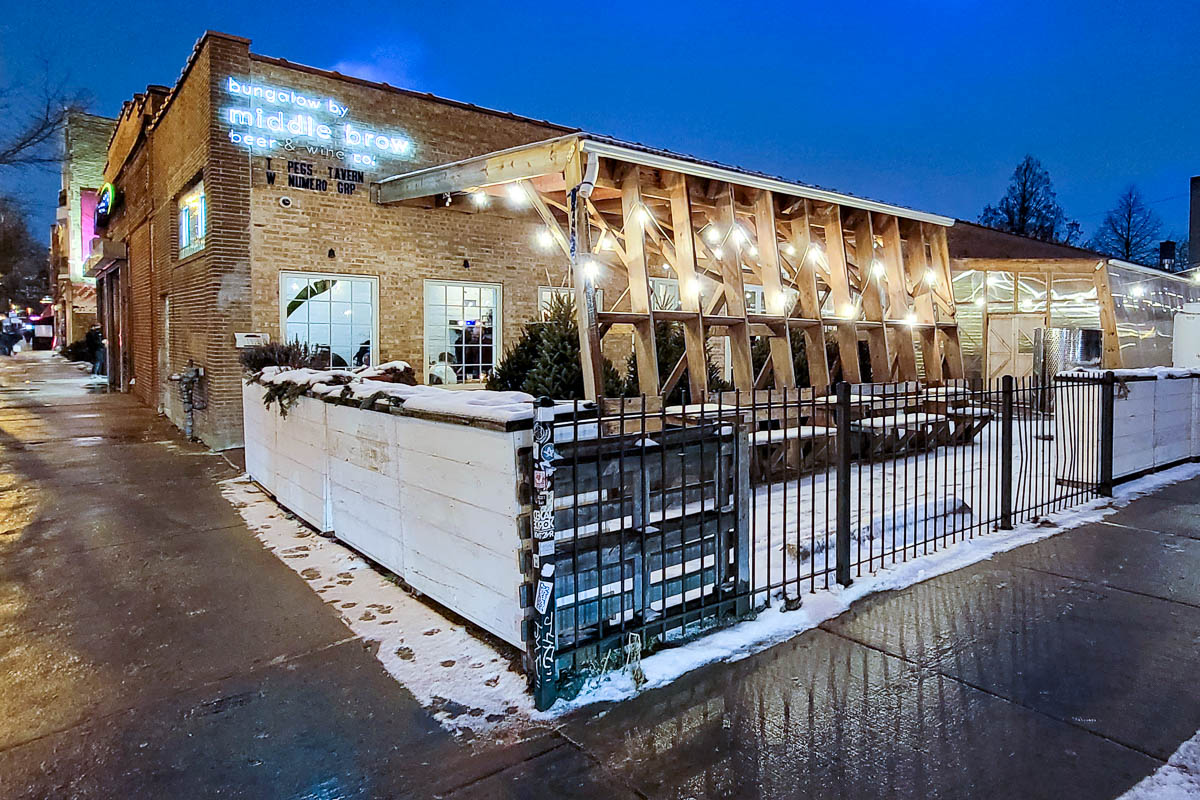
I had plans to meet a friend who lives in Logan Square last Thursday, so why not combine it with the Brews and Choos Project? The friend loves Bungalow by Middle Brow, and I understand why. It's really cool.
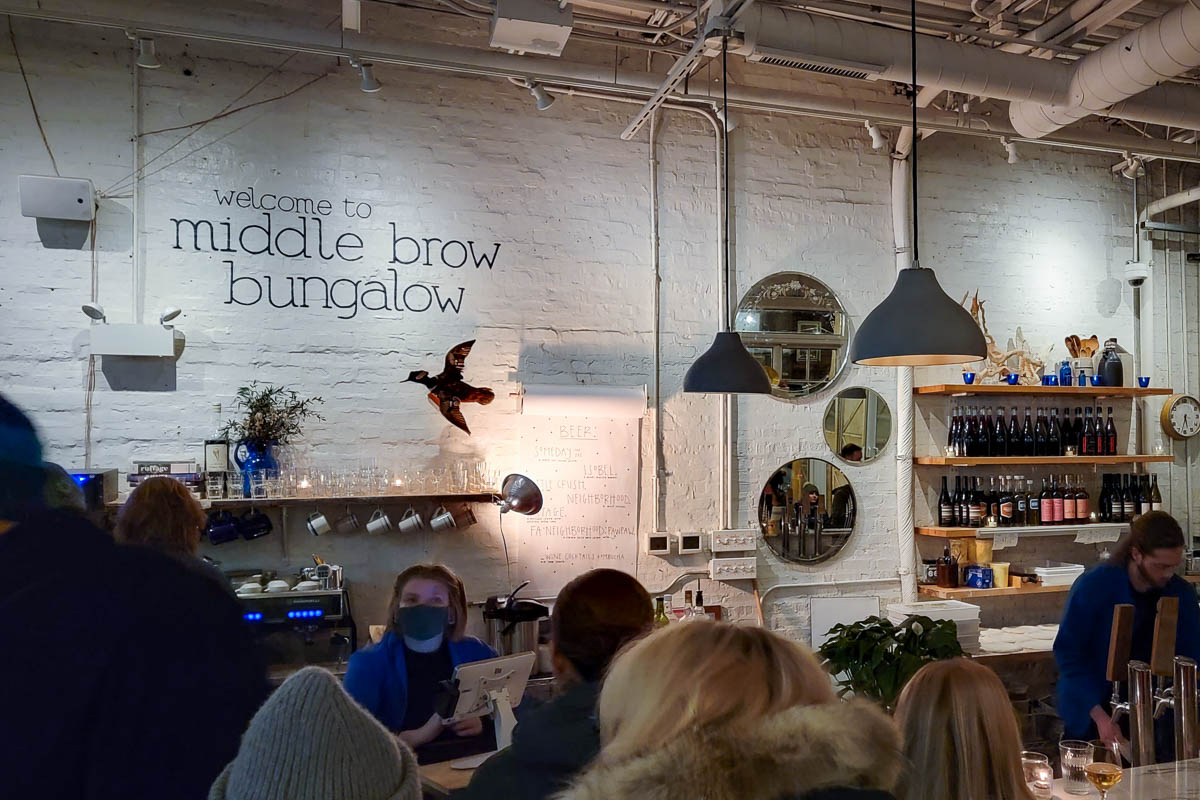
I tried a sip of my friend's Cottage Mexican Lager (4%), and put it in the category of "really well-made beer that didn't work for me." I just had a Little Crush IPA (4.5%), which fell into exactly that category for my friend, but which I liked a lot.
We also had an appetizer of fresh, warm bread with nduja butter, and we shared a pepperoni pizza. We cleaned our plates.
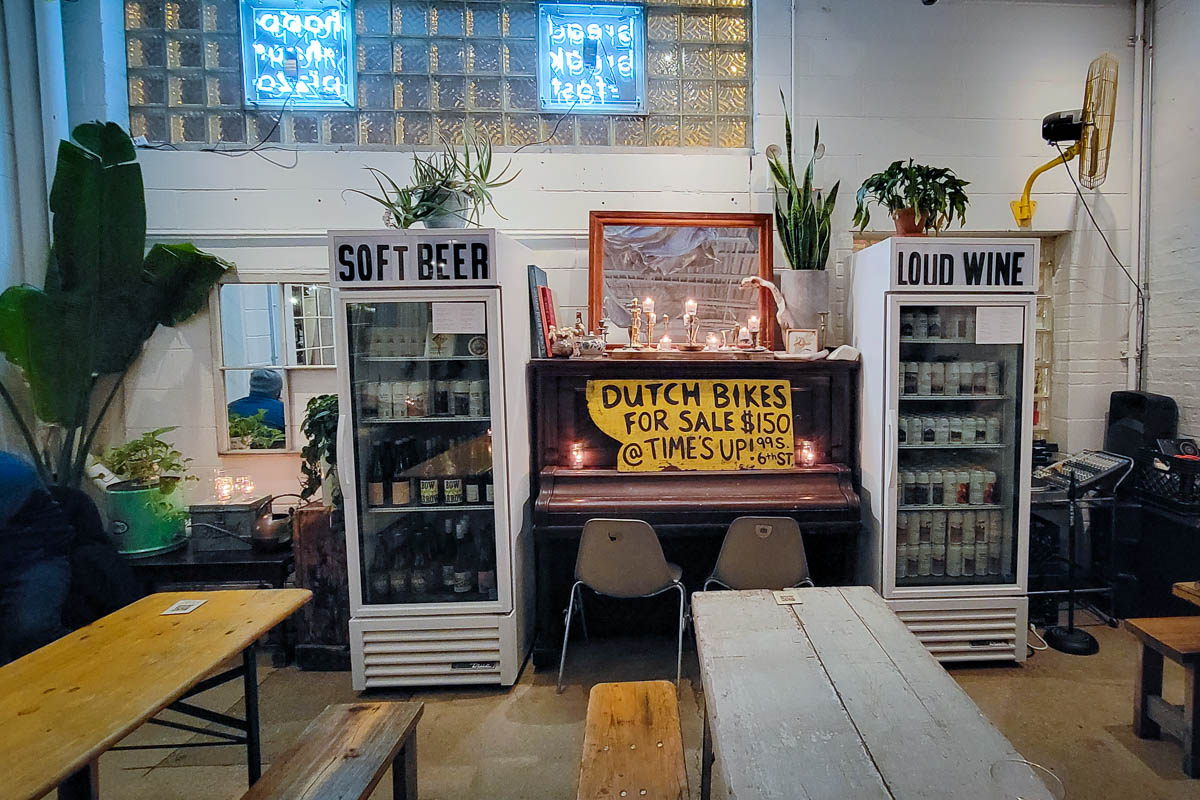
I will head back there when the weather gets warmer. It will be a good place to start when I visit the many other breweries within 1 kilometer of California and Armitage.
Beer garden? Yes
Dogs OK? No
Televisions? No
Serves food? Full menu
Would hang out with a book? Yes
Would hang out with friends? Yes
Would go back? Yes
It got practically tropical this afternoon, at least compared with yesterday:
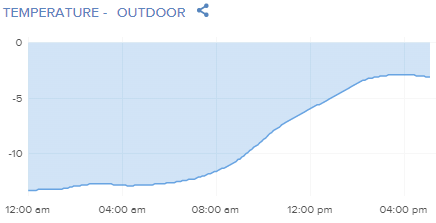
Cassie and I took advantage of the no-longer-deadly temperatures right at the top point of that curve to take a 40-minute, 4.3 km walk. Tomorrow should stay as warm, at least until the next cold front comes in and pushes temperatures down to -18°C for a few hours Thursday night.
I'm heading off to pub quiz in a few minutes, so I'll read these stories tomorrow morning:
OK, off to empty the dog, refill the dog, and scoot over to Sketchbook Skokie for a shellacking. (Our sports person can't make it tonight.)
I have no idea. But today I managed to get a lot of work done, so I'll have to read these later:
Finally, if you live in Chicago and look straight up and slightly north with binoculars tonight, you might see a little green comet that last passed Earth 50,000 years ago.
The sun finally came out around 3:30 this afternoon, as a high overcast layer slid slowly southeast. Of course, the temperature has fallen to -11°C and will keep sliding to -18°C overnight, but at least the gloom has receded! January will still end as the gloomiest ever, however, with around 18% of possible sunshine all month, plus whatever we get tomorrow.
Meanwhile, I want to come back to these articles later:
Finally, looking back a little farther (about 13 billion years), the James Webb Space Telescope has picked out some of the oldest galaxies in the universe. And they're really weird.
Welcome to stop #78 on the Brews and Choos project.
Brewery: Goose Island Beer Co., 1800 N. Clybourn Ave., Chicago
Train line: CTA Brown Line, Armitage
Time from Chicago: 12 minutes
Distance from station: 600 m
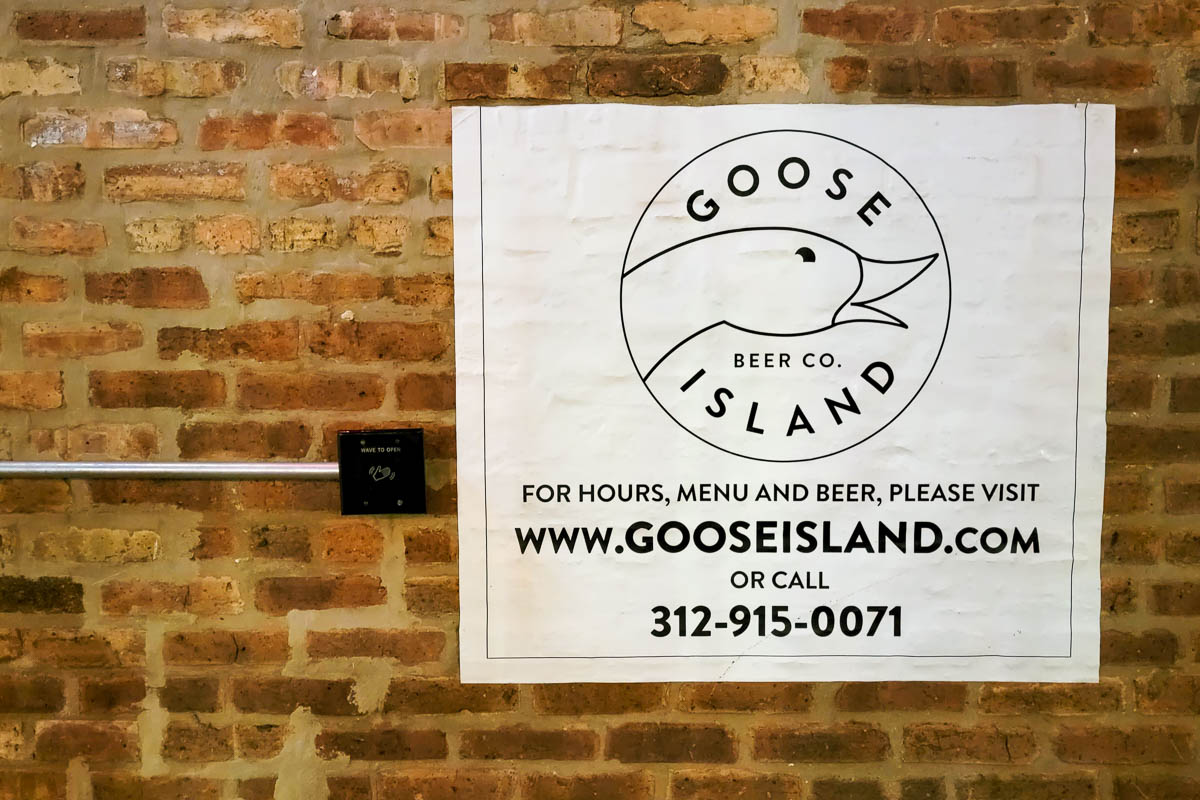
I put this one off for a long time because, in the years since I last visited, Chicago has had an explosion of craft breweries. Also because InBev bought them 12 years ago. The combination has taken Chicago's first and, for a long time, only local brewery taproom and made it kind of mediocre.
So why now? First, because later this year they plan to move to the Salt Shed, so there wasn't much time left; and second, because I saw M3GAN at the Arc 14 theater three blocks away, so it was convenient.
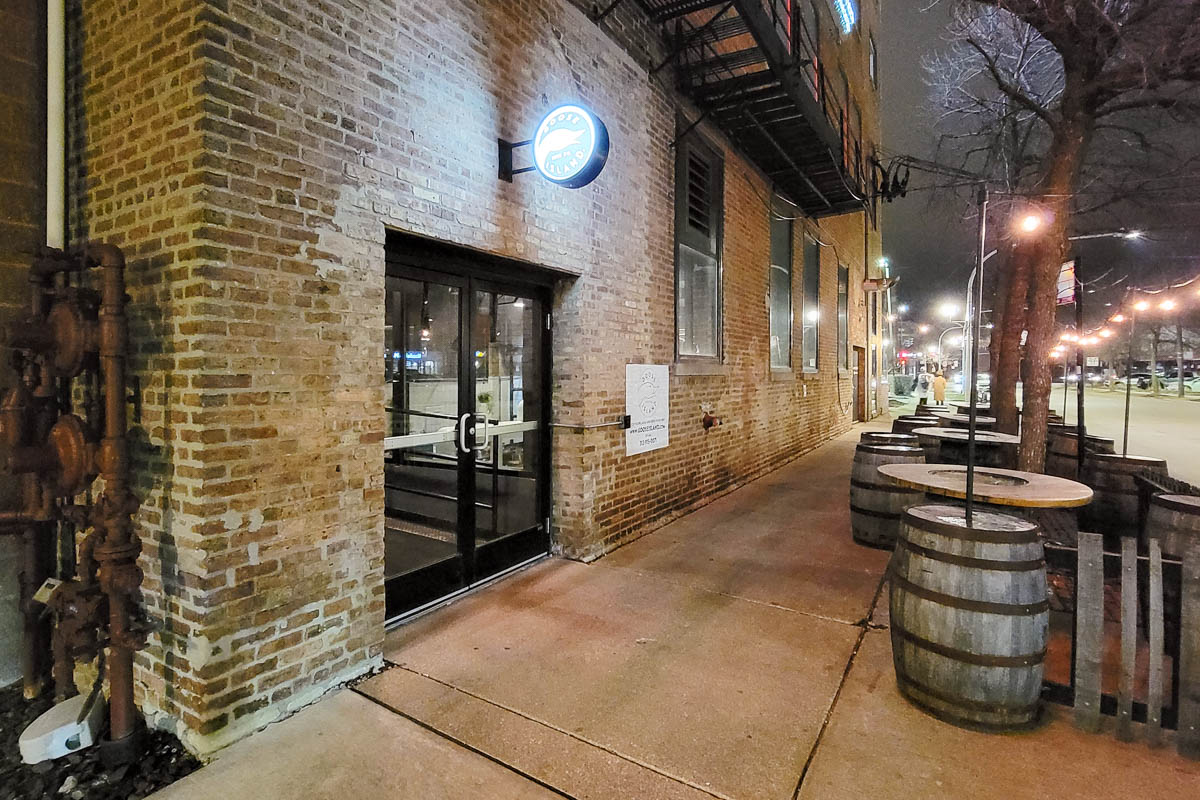
Since I used to drink a lot of Honkers Ale and the basic IPA, on Saturday I tried three beers I hadn't actually had before: the Phantom Limb pale ale (5.3%), the Flyway West Coast IPA (7.3%), and the Hazy Beer Hug IPA (6.8%). They were all fine, and I would have them again, but (a) I didn't take notes because I was out with a friend and (b) I wouldn't have had a lot to say anyway.
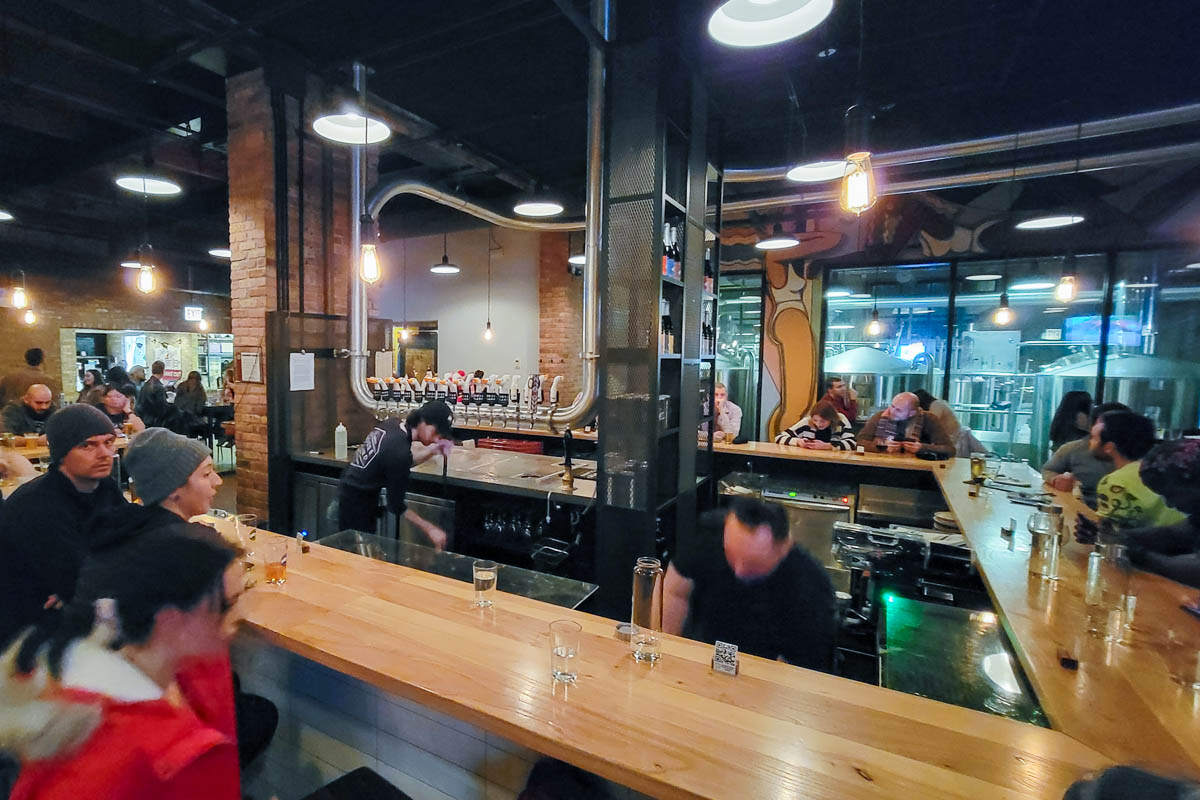
Goose Island used to be the only game in town, but they were revelatory. But a lot more breweries have opened up since 1987, with a lot better beers. InBev goes for volume over quality.
I'll still stop into their Fulton Avenue taproom at some point. And the new brewpub at the Salt Shed, when it opens. But really, stopping into their aging Clybourn brewpub was just to complete the B&C list.
Beer garden? Sidewalk patio
Dogs OK? No
Televisions? Yes, avoidable
Serves food? Yes, full menu
Would hang out with a book? Maybe
Would hang out with friends? Maybe
Would go back? Maybe
I've written before about urban highways, never favorably. Ploughing massive roads through dense urban areas has done incalculable damage to North American cities that tearing them down or burying them has only just started to fix—but usually with an order of magnitude more cost than their initial construction.
Today I got an innocent little email listing houses for sale around Chicago, both because I'm interested to see what's out there, and also because I've been too lazy to turn it off since I last moved. But one house stood out today: a beautiful, 4-bedroom Victorian built in 1898 with a lovely wraparound porch, tons of light and air, steps from everything.
I would love to live in a house just like this. In fact, there are similar houses near me, with price tags around $2-$3 million.
This stately lady in Old Irving Park can be yours for only $750,000. And that jaw-dropping difference in value is entirely due to its location.
You see, even though this house is steps from everything—only four blocks to the Metra, three blocks to the El, close to the shops in the historic commercial corridor along Elston—it's also just 200 meters from the 10-lane I-90/94 expressway:

I mean, holy hell. Getting to the El or to the Metra stations at Mayfair or Irving Park requires crossing all those lanes of traffic. I've done it; the Montrose and Irving Park bridges are soul-crushing for pedestrians. Worse, the Keeler underpass (which you'd take to the Irving Park station) requires you to cross two entrance and exit ramps on either side of a half-block-long underpass.
I'm not even going to talk about how loud the 10 lanes of traffic must be.
In short, this beautiful house, "the second built in the area," can't get anywhere near the price it would had the city not destroyed the neighborhood in the 1950s.
Sad.